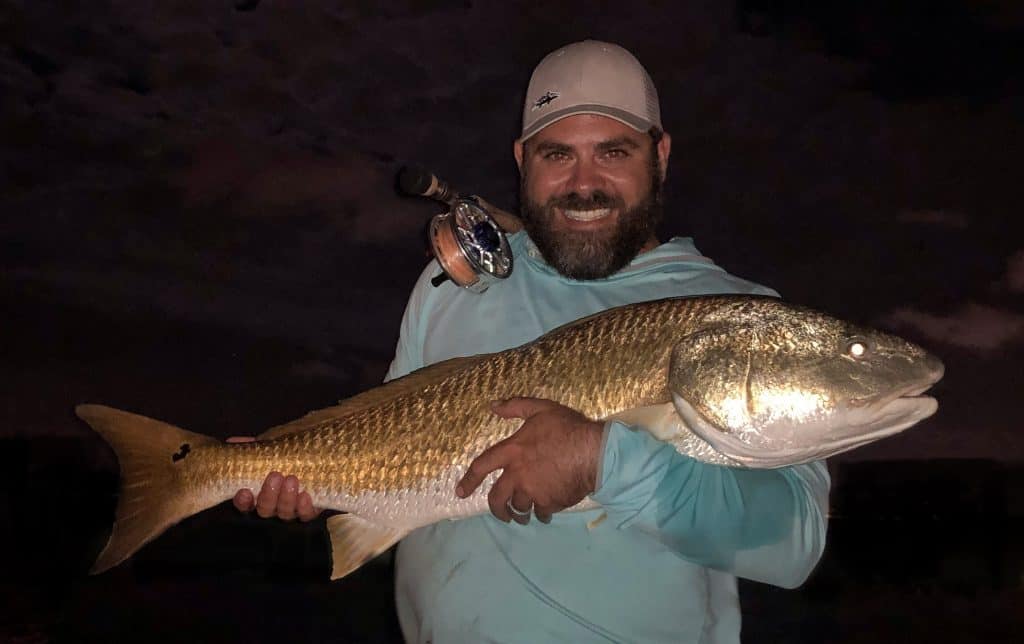
Northeast Florida is known for its rich history and that “Old Florida” lifestyle. However, when thinking of fishing in Florida, the Northeastearn part of the state is one of the most overlooked areas.
From Palm Coast up to the Georgia line, the fishing offers unique opportunities to target specific species of fish and opportunities to try different techniques.
As a lifelong resident and local fishing guide, I have compiled a list of unique fishing opportunities that are often overlooked.
Below, I will reveal 9 of them, and talk about the best time to experience each one. If you are planning a trip to this area, you owe it to yourself to plan one of these fishing adventures!
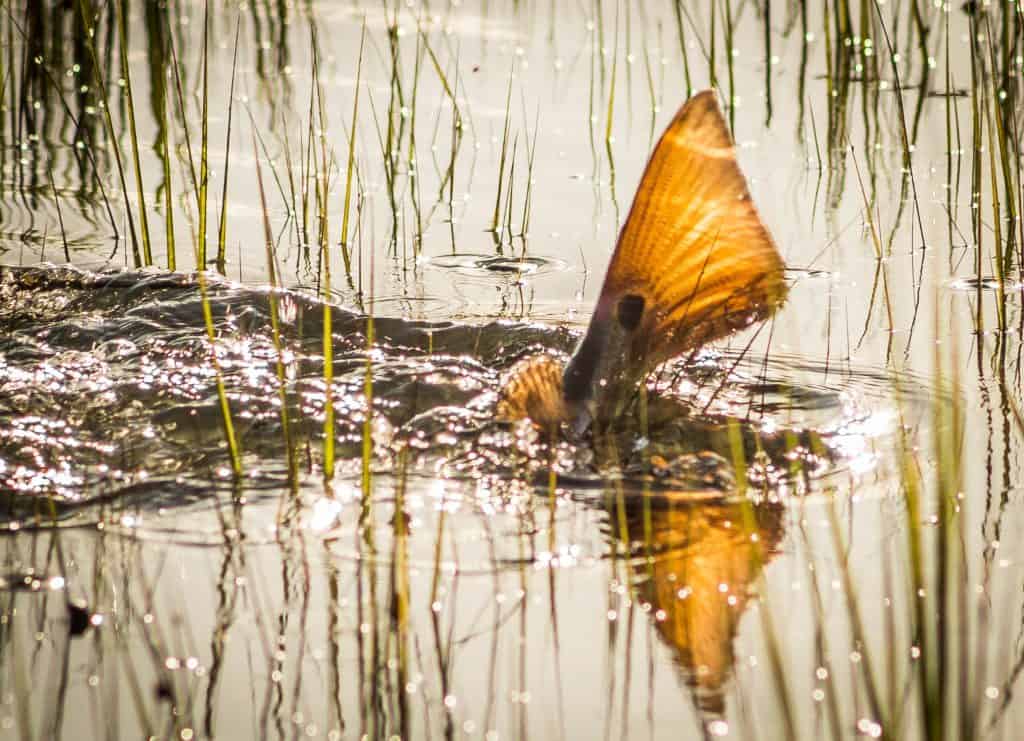
- Flood tide fishing
Species: Redfish and Sheepshead
Water Temperature: 72 Degrees
A flood tide is a phenomenon where lunar phases coincide with high tides to create what is called a “King tide” or flood tide.
In the state of Florida, flood tides only occur from St. Augustine northward to the state line. This has to do with the size of the tides in this region.
On any given day, a high tide can be upwards of 4.5ft. During a flood tide, they can reach up to 6ft. This far exceeds what you will find anywhere else in Florida.
On days where a king tide occurs, the vast spartina grass marshes receive water in areas that are normally above normal tide levels. The spartina grass is home to a broad array of life, but most importantly crabs.
These crabs know they are vulnerable prey to fish and therefore take shelter in grassy marshes where, most of the time, they are safe.
When water from a flood tide enters these normally dry areas, the crabs will be seen swimming across the top of the water, or clinging desperately to a piece of grass above the water.
Why are the crabs so worried you might ask? This is because predator fish, such as redfish and sheepshead, know when these events will occur. They force themselves onto the skinny grass flats to gorge on the helpless crabs.
Redfish can often be seen waving their tails above the water as they stand on their head trying to dig out these crabs!
As you can imagine, this can make for some incredible sight fishing opportunities for tailing fish. Nothing gets the blood flowing more than having a big redfish tail waving only a short distance from you.
This is an excellent time to break out the long rod as these hungry fish will eat a well-placed fly almost every time.
Since the size of the crabs are small, crab flies will be your best bet for a hookup. If you are a novice fly-angler, that is ok, this is a perfect opportunity to get some shots at fish that are not extremely spooky.
Since these fish are feeding so hard, they are laser focussed, which allows you to get closer than you would imagine to a tailing fish.
If you get the chance, I would highly recommend experiencing a flood tide. Especially if you enjoy sight-fishing.
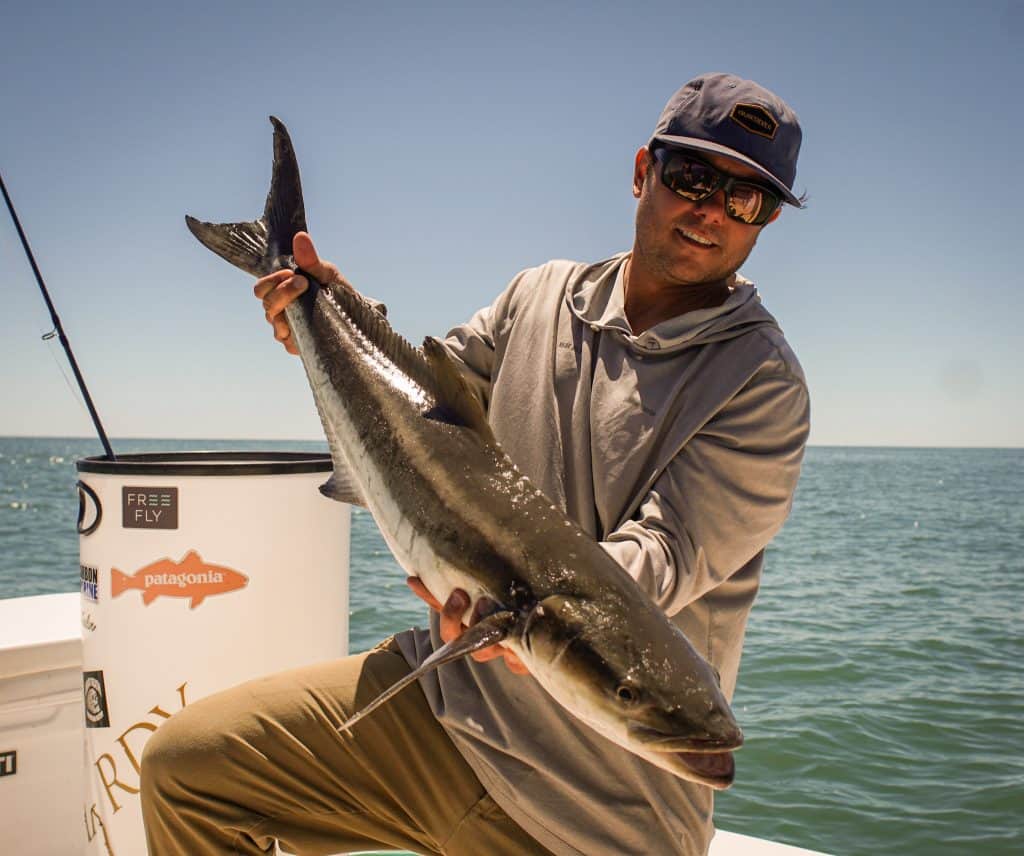
- Manta ray migration
Species: Cobia
Water temperature: 70 degrees
As spring gives way to summer, large manta rays will begin their migration northward to the Carolinas. The path of least resistance for these ten-foot animals is along the beach.
Here, you will often find them jumping out of the water or sticking the tips of their wings above the surface as what appears like a shark fin.
Just seeing these manta rays is awe-inspiring in itself. However, the true allure of the migration is what follows with the rays.
Cobia are large predator fish that look almost shark-like in the water and offer incredible table fare. The cobia have learned that if they follow the manta rays, it will allow them access to easy meals.
Using the large manta ray wings as cover, the cobia will ride under the wings or directly on top of the large ray.
When a meal presents itself, the cobia will dart out with lighting speed and devour whatever is in its path. This provides some stellar heart-pumping sight fishing action.
When the water temperatures become right, it will be time to cruise up and down the beach. The rays will be visible from quite a distance away on sunny days, as they will appear as large black spots in the water.
As you approach the ray, you will look for cobia swimming with him. Once spotted, a lure, live bait, or even a fly will get the job done.
The cobia can range from 5lbs all the way up to 60lbs. They fight incredibly hard and do not give up easily. Being able to spot the fish and watch him eat the bait, makes this type of fishing that much more exciting!
Try to avoid using heavy lures or weights as the fish is normally on or directly below the ray. You do not want to hook the ray.
When you spot one manta ray, look closely as they migrate in packs. Where there is one there are typically more!
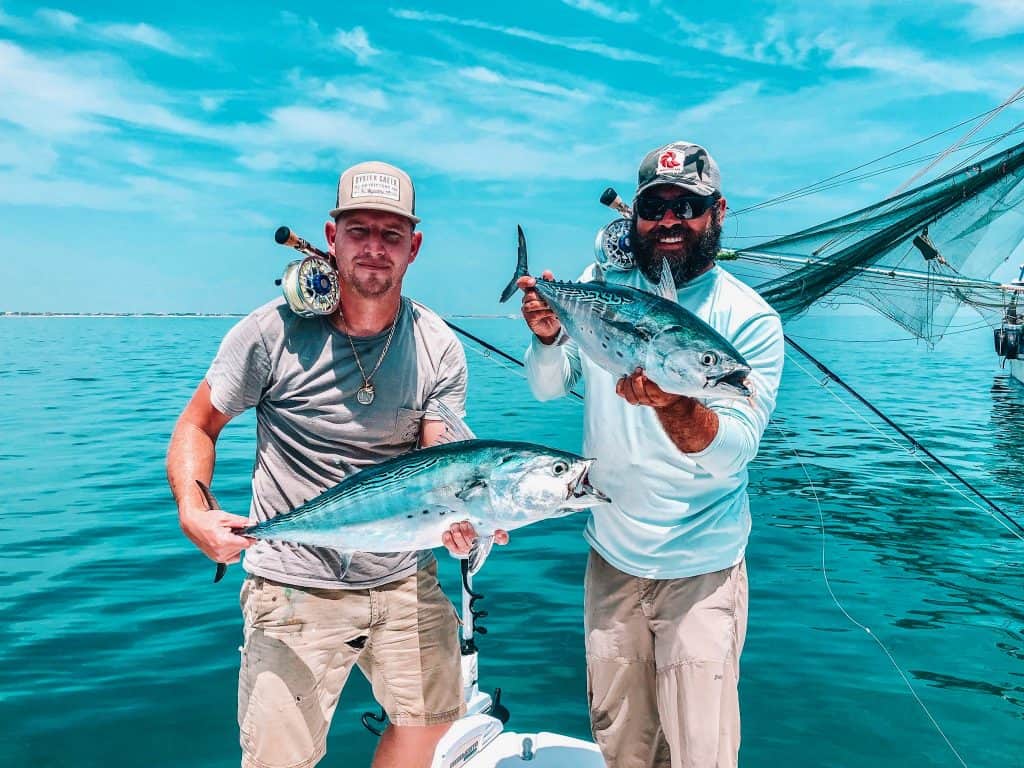
- False Albacore behind shrimp boats
Species: False Albacore
Water temperature: 77 degrees
While false albacore (also called Albies) are not exclusive to Florida, the northeast region of Florida is home to some bigger fish.
During the summer months, shrimpers who are trying to make a living will scour the beaches from South Carolina down to Daytona Beach.
As these shrimpers drag their nets to trap shrimp, unfortunately, a variety of other smaller fish are also trapped in the net.
Throughout the day, the nets will be pulled to check their catch and sort out any unwanted fish, which is then tossed over the side. This is referred to as by-catch.
The by-catch creates a large slick behind the boat which is best described as a “buffet line” for a multitude of species. One of these species that has taken a liking to free meals, is the false albacore.
Tossing a fly or a dead behind the shrimp boat will typically result in your line smoking out. If you have never caught albacore before, the best way I can describe it is that they are like catching giant bonefish in deep water.
Their runs are fast and long and will often look for things to wrap your line in, such as the shrimp boat.
Although these fish have no edible value, their fight makes them a sought-after gamefish.
Typically the albacore behind the shrimp boats can range anywhere from 5-17lbs. An Albie in the 17lb range will test any tackle!
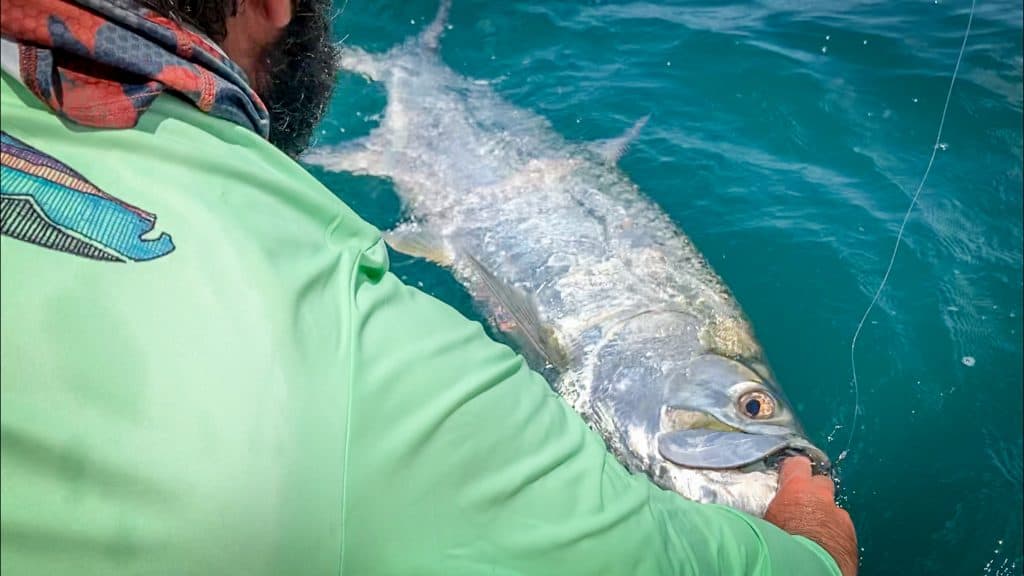
- Tarpon in the bait pods
Species: Tarpon
Water Temperature: 77 degrees
By far the best place to target tarpon is in the Florida Keys. However, North Florida has a healthy migration of fish during the summer and fall.
Some of the biggest fish I have seen caught have been in the northern region and up into southern Georgia.
Tarpon in this region will be migrating to the area in the warm summer months. A lot of scientists believe that there is a subset of tarpon that moves up towards the coast of Georgia to breed.
Once they have completed their journey and bred off the coast, they will make their way back south towards the Florida Keys prior to the winter months.
One thing is clear; they are feeding heavily along their journey. Where there is bait, there will be hungry feeding tarpon!
It’s no coincidence that once our annual menhaden baitfish run begins, the tarpon will start to show.
A common sight while tarpon fishing is to see thousands of menhaden balled up, swimming in a tight circle, with 50-200lb tarpon crashing through them and breaching the water. I could sit and watch the aerial display all day!
Drifting a wounded baitfish outside of the pod will all but guarantee you a hookup and then the fun begins!
Although Northeast Florida isn’t known as a tarpon destination, the tarpon fishing is quite good!
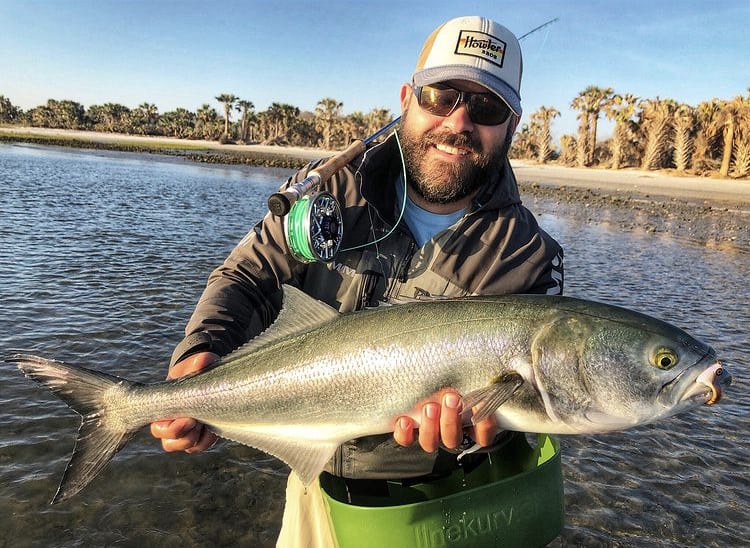
- Tailing blue fish
Species: Bluefish
Water temperature: 63 degrees
At the tail end of winter, a large migration of bluefish will flood into the intracoastal waterways to breed before heading north. During this time, the fish can be seen in large groups often tailing at the surface.
Along the edges of the inlet systems and even far back into creeks, it is not uncommon to run into the feisty fish.
What is uncommon is the size of the fish. During this time, the bluefish range from 25-40+ inches and are one heck of a fight.
Wading shallow areas near the inlets on a falling tide will uncover some giant sickle tails that resemble that of a permit. Even though these fish are tailing, they are not tailing for food.
Instead, it is believed that they are spawning during this time or simply relaxing in the shallows.
Feeding one of these tailing bluefish is done more by making them strike out of anger than by natural feeding habits. Repeatedly placing the fly in front of a tailing fish, will elicit a strike if the bait is moved quickly.
Bluefish are extremely aggressive eaters and will make long runs and jump similar to tarpon. They have razor-sharp teeth and will often cut your line or your bait in half if you are not using a wire leader.
Chasing these tailing fish offers a unique opportunity to wade and cast at large tailing fish.
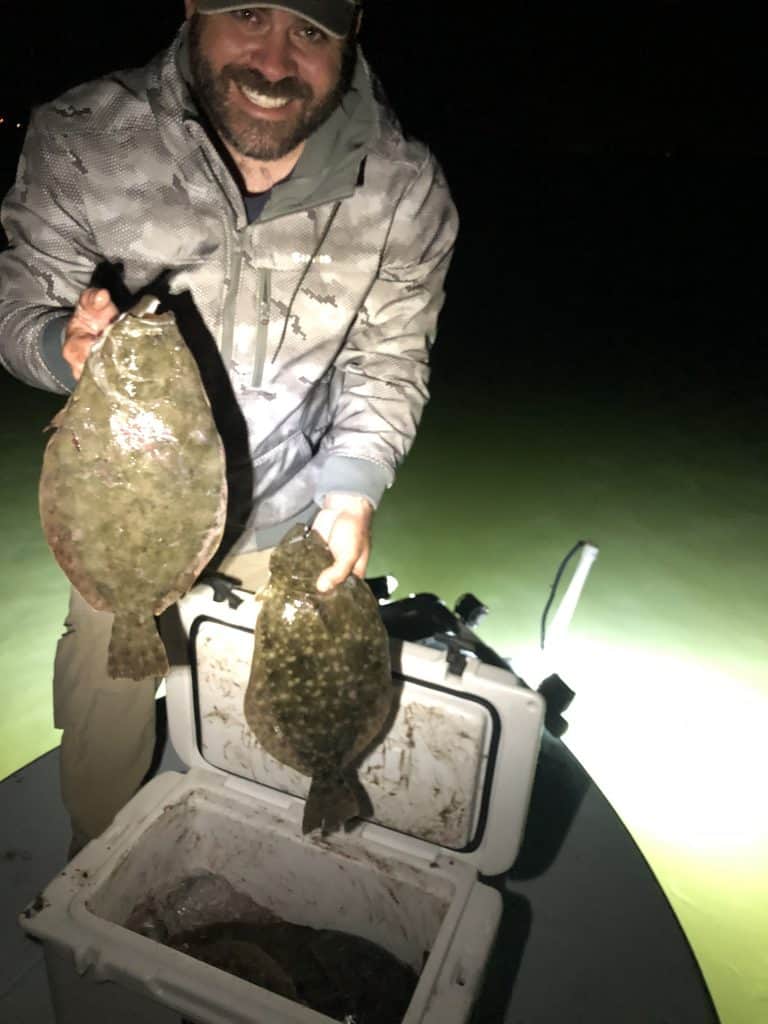
- Flounder gigging
Species: Flounder
Water Temperature: sub 70 degrees
Gigging is not a traditional form of fishing, but boy is it fun! Especially when doing it for flounder – one of the best -eating fish in the ocean!
If you aren’t familiar, gigging involves using a light system to shine and see underwater at night. Once the target is acquired, you stab the fish with a gig, which is similar to a multi-pronged spear.
Gigging involves some skill to be able to spot the flounder under the water. Flounder have an amazing ability to blend in and will bury themselves flat against the bottom.
Lying there motionlessly, they wait for unsuspecting prey to swim by, where it becomes an easy ambush target.
Stealth is not important as the fish do not spook easily. However, you need a boat that has the ability to get really shallow. Flounder will lay in mere inches of water.
Most of the time, the largest flounder are taken by gigging as you are able to cover more area with your eyes and will see fish that you may not know are there when fishing conventionally.
Water clarity is extremely important when gigging. In Northeast Florida, the clearest water coincides with the winter months, so gigging is popular during this time frame.
Wind and heavy rain affect the visibility of the water and make it tough to be successful.
If you are looking to experience something unique and eat some quality fish, gigging is a great option!
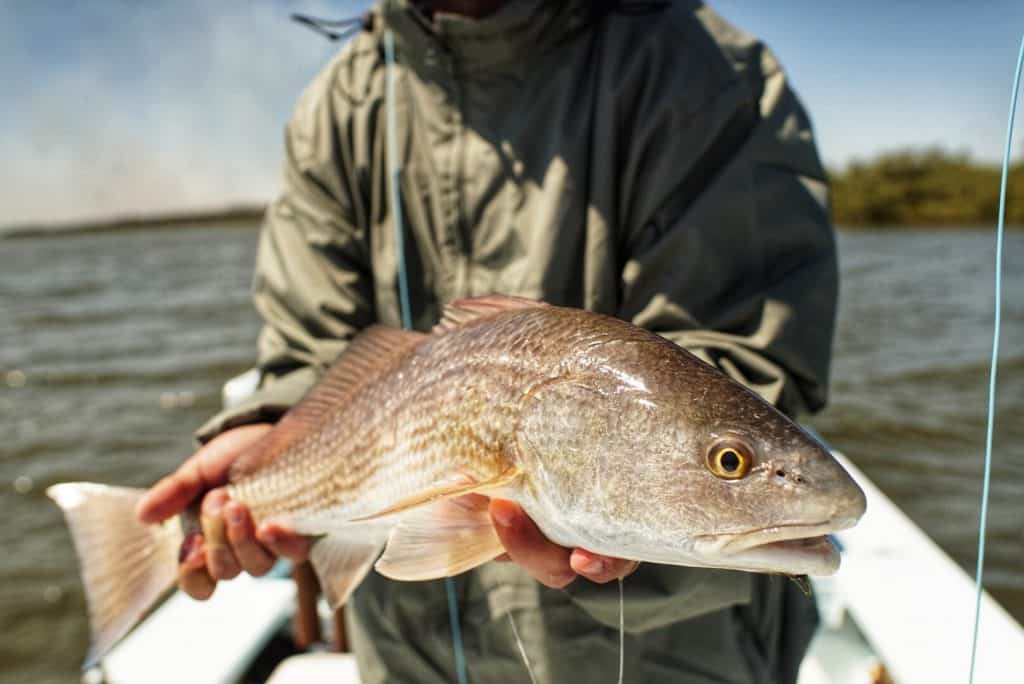
- Winter redfish schools
Species: Redfish
Water temperature: Sub 65 degrees
As I mentioned, the water in Northeast Florida is most clear during the winter months. Also in the winter, redfish will school together and create giant wads of fish.
As you can imagine, this combination makes for some of the best fishing of the year.
Some of the redfish schools can be as large as 200 fish. When they are in groups, competition for food is fierce.
Placing a bait, lure, or fly within these groups will have fish fighting over the meal. Couple this with the clear water, and you have some amazing sights to witness.
Oftentimes these schools will remain close to shallow water. When you run into them, if approached properly, you can fish them all day.
Some of our largest numbers of fish are caught during these times.
For the fly-angler, this is one of the best times to fish in the area. The clear flats are unlike anywhere else, where it can be a mixture of mud, sand, and oyster mounds that fish will cling to.
Winter time redfishing is one of my favorite ways to fish in Northeast Florida.
- Shad fishing the St. Johns River
Species: Shad
Time of year: December through February
The annual run of shad is an impressive sight to see. When it is on, every cast can yield you one of these hard-fighting little fish.
The St Johns river, which is the only river to flow north, is home to this unique little migration.
Shad are only about 2-3lbs at best, so this is a good opportunity to use some of your lighter fly gear, such as a 4 or 5 weight.
If fly fishing isn’t your cup of tea, then trolling small spoons using ultra-light gear will be a blast. Where these fish lack in size, they make up for in their fight.
Shad pull extremely hard and will make some impressive jumps. When I first tried this, I wasn’t expecting much, but I was pleasantly surprised at how hard they fight!
The beauty of shad fishing is when they are there, the action will be non-stop. Fish after fish isn’t uncommon and is great for small kids or if you are the person who needs that constant action.
In addition to it being fun, the landscape of the St. Johns River is magical. The southern part of the river appears untouched and gives me the feeling of being lost.
If you are looking for a retreat from everyday life, I would highly recommend giving this a shot.
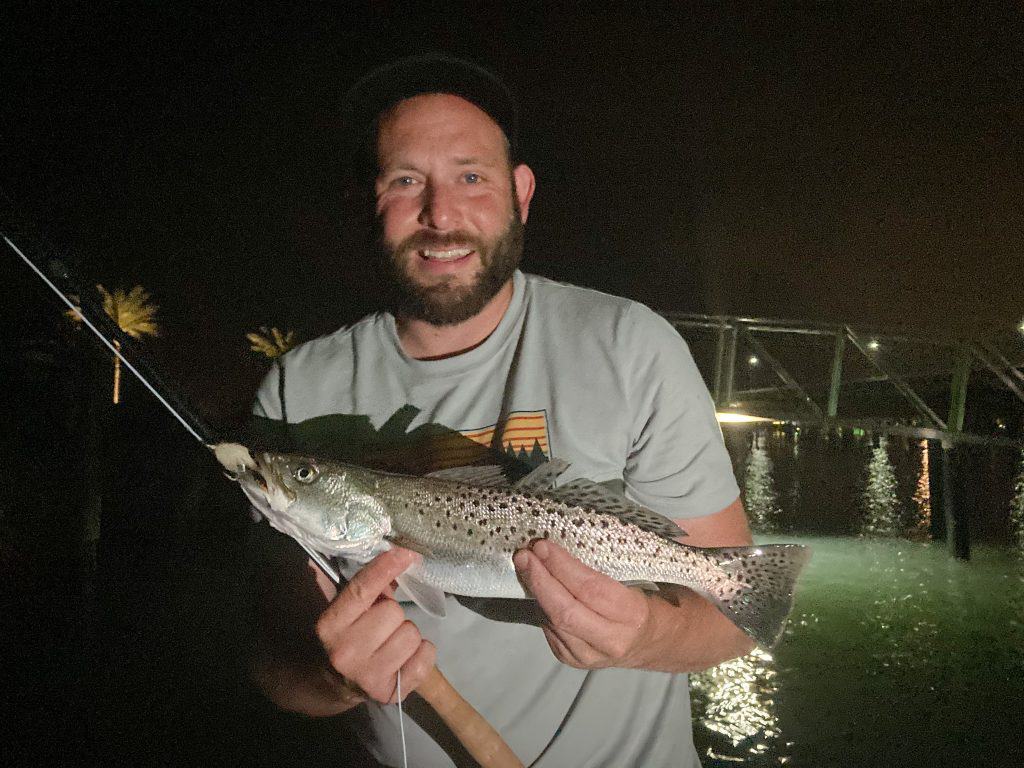
- Docklight Fishing
Species: Trout, Tarpon, Redfish, Snook
Water Temperature: Varies
New ways of fishing are what keeps me excited and well-rounded when guiding.
One aspect of fishing that is overlooked, is fishing at night. Fishing lights at night is not only productive, it can help you gain opportunities you might not have during the day. Additionally, it can help beat the heat of those summer days.
Docklight fishing involves scanning artificial lights that are above the water near docks and other bridges.
At night, bait is naturally drawn to the light, similar to bugs, and therefore predators are there waiting. The light also provides an advantage to the predator to see better and allows them to feed when it is dark out.
In Northeast Florida, trout in particular love dock lights. In the summer, it is far easier to catch quality trout at night, than it is during the day. Almost every light will have visible trout and you can watch them eat things that float through the light line.
One of the most important aspects of fishing light at night is stealth. If you get too close or make too much noise, the fish will disappear.
This is especially true if you come across redfish or snook in the light.
Some of the largest redfish I have caught have been in lights at night. Seeing a redfish ride high in the column and watching him eat your bait is an incredible experience.
Redfish and tarpon tend to hold closer to bridges and deeper water, while snook and trout will congregate around docks in shallower water.
When guiding in the summer months, I will often recommend a night trip if it makes sense. More times than not, the client is grateful for my recommendation and enjoyed that they were able to experience something they never knew existed.
Conclusion
Northeast Florida is commonly overlooked when Florida fishing trips are planned. The area offers some incredible and unique fishing experiences that rival that of other parts of the state.
If you are interested in exploring this area or have an upcoming trip and would like to do some fishing, please check out All Water Expeditions Guide Service.
I have been fortunate to call this area home my entire life, and am grateful to be able to share my fishing passion through guiding!
